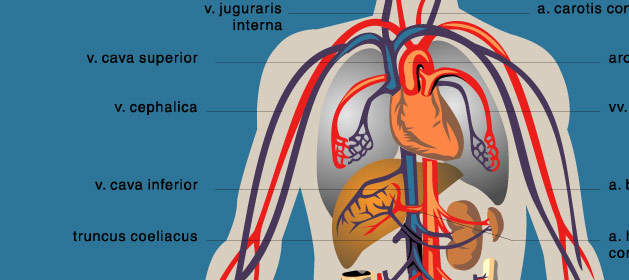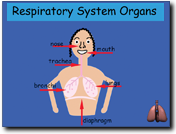
Students will create a multimedia report about the systems of the human body.
Application: Share™

The local museum has selected your class to create an interactive student exhibit where students can come and learn about each part of the human body, including the nervous system, respiratory system, circulatory system, and digestive system. Your team’s task is to create a web site to inform other students about the importance and function of one of these body systems.
Ask students how many of them have a bike. Ask students to name the parts of the bike, such as handlebars, seat, and wheels. Record students’ answers on chart paper. Ask students to think about how the parts of a bike work together to help you create movement. For example, if one part of the bike is not working, is it still possible that bike will work? Will the bike work as efficiently? Continue to write students’ responses on chart paper.
Ask students whether the bike would still work properly if they didn’t treat it properly. Discuss with students that each part of the bicycle plays an important function in making the bike work as a whole.
Ask students to think about how the organs in a body system, such as the digestive system, work together. Hold up an apple and take a bite. Ask students what body system you are using to eat the apple. Record students’ answers on chart paper. Ask students how each part of the digestive system works together to help digest the apple.
Ask students how the bicycle system is analogous to the digestive system in the human body.
Divide students into small groups and assign each group one of the six body systems:
The group can use online and print resources to answer the following questions about its body system.
Have students work together to create a diagram of their body system using the drawing tools in Share. The diagram, or illustration, should include major organs, correct terminology in the labeling, and a brief text description of how each part contributes to the system’s role in the human body.
Students should use the information from their research and their diagrams to help them create a web site about the body system.
You might suggest that their web site include:
Invite community members, parents, and students to a Human Body Open House. During this open house, various student groups will present their projects on the human body and answer questions from the audience about their projects. The presentation should include a detailed explanation of the human body system, as well as why taking care of the system is important for good health.

Assess your students’ prior knowledge based on the introductory bike activity as well as their class participation. You will be able to assess their research abilities and knowledge through their research questions, and you can evaluate comprehension using the diagram they create of the body system. Their web site will help you evaluate writing skills, creativity, and design skills. You will also be able to assess their problem-solving, team work, planning, and time management skills as each team works through the process.
Cole, Joanna and Degan, Bruce. The Magic School Bus: Inside the Human Body. ISBN: 0590726331
Weiner, Esther. The Incredible Human Body. ISBN: 0590599283
Writing Standards
Production and Distribution of Writing
4. Produce clear and coherent writing in which the development, organization, and style are appropriate to task, purpose, and audience.
Research to Build and Present Knowledge
7. Conduct short as well as more sustained research projects based on focused questions, demonstrating understanding of the subject under investigation.
Language Standards
Conventions of Standard English
1. Demonstrate command of the conventions of standard English grammar and usage when writing or speaking.
Knowledge of Language
3. Apply knowledge of language to understand how language functions in different contexts, to make effective choices for meaning or style, and to comprehend more fully when reading or listening.
3. Knowledge Constructor
Students critically curate a variety of resources using digital tools to construct knowledge, produce creative artifacts and make meaningful learning experiences for themselves and others. Students:
a. plan and employ effective research strategies to locate information and other resources for their intellectual or creative pursuits.
b. evaluate the accuracy, perspective, credibility and relevance of information, media, data or other resources.
c. curate information from digital resources using a variety of tools and methods to create collections of artifacts that demonstrate meaningful connections or conclusions.
6. Creative Communicator
Students communicate clearly and express themselves creatively for a variety of purposes using the platforms, tools, styles, formats and digital media appropriate to their goals. Students:
a. choose the appropriate platforms and tools for meeting the desired objectives of their creation or communication.
b. create original works or responsibly repurpose or remix digital resources into new creations.
c. communicate complex ideas clearly and effectively by creating or using a variety of digital objects such as visualizations, models or simulations.
d. publish or present content that customizes the message and medium for their intended audiences.

Follow us on Instagram for daily inspiration

Create a thought web, cluster, flowchart, or other graphic organizer for a lesson
8 first projects to get students using technology
Creative, digital book reviews
Fun and powerful ideas with animated characters

Wixie
Share your ideas, imagination, and understanding through writing, art, voice, and video.

Rubric Maker
Create custom rubrics for your classroom.

Pics4Learning
A curated, copyright-friendly image library that is safe and free for education.

Wriddle
Write, record, and illustrate a sentence.

Get creative classroom ideas delivered straight to your inbox once a month.
Topics